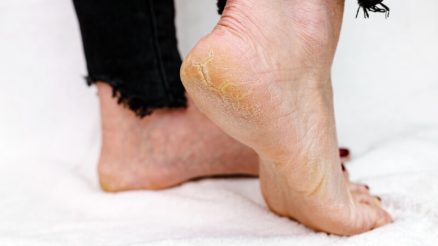6. Wear Comfortable, Well-Fitted Shoes with Socks
Whether you’re working out or walking, always wear comfortable shoes that fit you well with socks. Avoid high-heeled shoes or those with pointed toes. Sandals or open-toed shoes leave your heels and toes unprotected and thus vulnerable to infections and injuries.
Whenever you buy new shoes, try them on with the kind of socks you often wear. Make sure you only wear your new pair of shoes for a few minutes; never go for up to an hour in new footwear. It’s important for your shoes to fit properly. However, if you have nerve damage or neuropathy, you might not sense whether your shoes fit properly or not.
Stand straight on a piece of paper to trace your feet size; you’ll notice that your feet changes in shape if you’re standing. Let someone do this for you. The first time, stand on the paper barefoot. Wear shoes when making a trace in the second round and compare the two tracings to help you determine whether your footwear fits properly or not.
The second tracing made while wearing shoes should be at least half-an-inch wider than the first tracing and longer than your longest toe. As a person with diabetes, make sure your shoes are soft on the inside, have a stiff outer sole and seamless leather uppers on the inside.
The shoes must be closed, especially at the toes and have short heels. Shoes made from canvas, leather or suede, are highly breathable to ensure your feet get fresh air. Laced shoes provide better support than loafers while those with cushioned soles absorb pressure for optimal support of your feet.
You might have to wear special types of shoes if recommended by your doctor. It’s best to buy shoes when your feet are the largest, at the end of the day.









